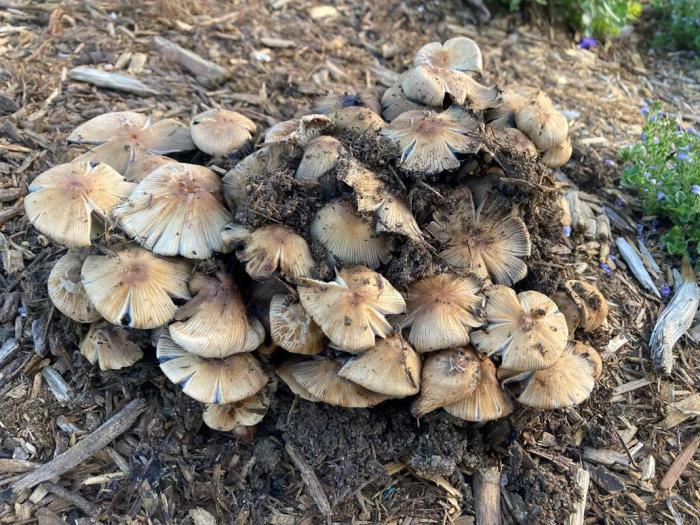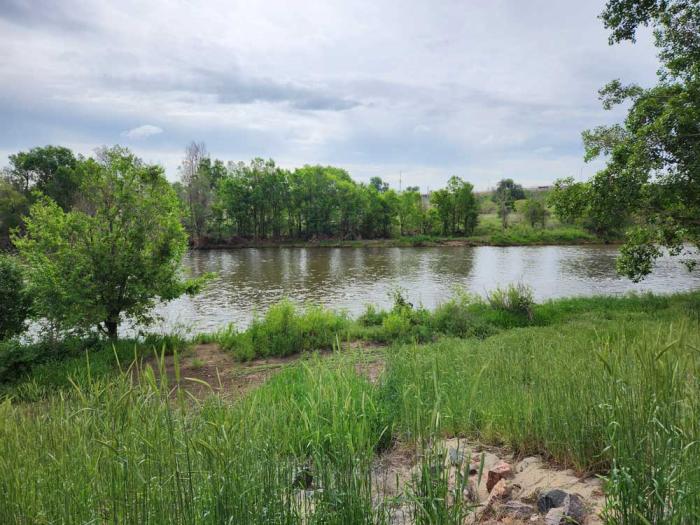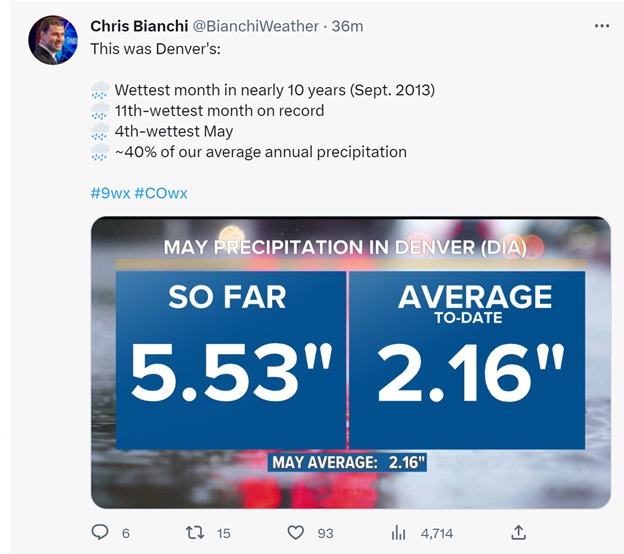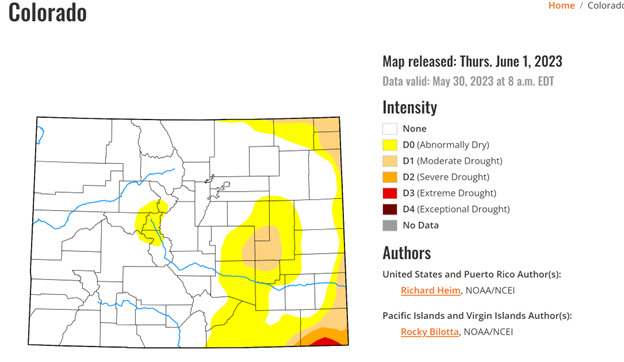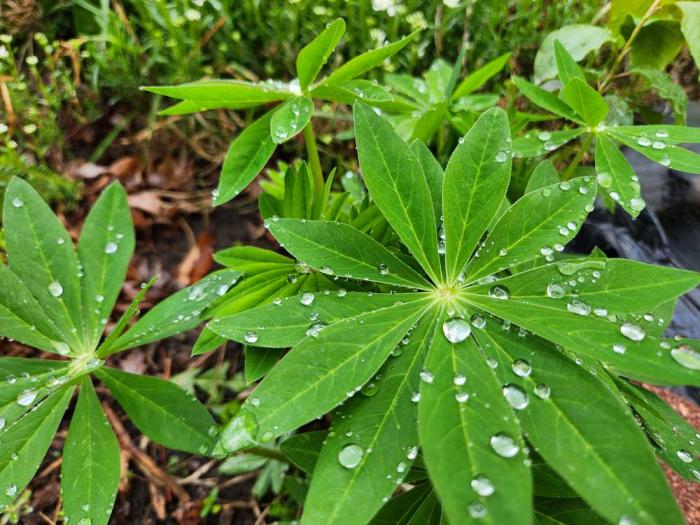Soaking up the fruits of a wet May
If April showers bring May flowers, what do May showers ― lots and lots of May showers ― bring?
For one thing, they bring a rare shot of relief to Denver Water supply managers, who are reveling, at least for the moment, in one of the wettest months on record in Denver.
While no one should get carried away, and everyone should continue their very best efforts to conserve water, the monthlong soaking the region enjoyed in May gave a needed lift to reservoirs, lawns, soils and gardens across the area.
Final numbers made May 2023 the 11th-wettest month ever in Denver. And we finished just a smidge ― 0.07 inches! ― from cracking the Top 10 all-time wettest months for the city.
May’s total precipitation: 5.53 inches.
Here’s another way to think about it: As Denver Water’s weather data for the city goes back to 1872, we’re looking at 1,817 months of precipitation records.
And landing in 11th place out of 1,817 contenders is something to write home about. (Or, at the very least, write about on Denver Water’s TAP news site!)
Shameless plug: Forward this story to a friend and tell them to subscribe to TAP’s free, weekly email newsletter. Here’s the subscriber link.
And, when you narrow more than a century’s worth of data down to the month of May, this was the fourth-wettest May on record (out of 152 Mays).
This wet May produced so many interesting developments, we’re going to lay them down here 1) for the historical record and 2) as a factual feast for water nerds among us.
- For Denver Water, the wet May drove customer demand way down, as residents continue to get smarter about turning off irrigation in wet weather. Demand from Denver Water customers was 89% of a typical May. Compare that to May 2022, when a hotter and dryer month drove demand up to 142% of normal.
- Denver Water stored a total of 50,000 acre-feet of water in May, nearly 19,000 acre-feet more than the utility had anticipated. That’s the same volume (19,000 AF) of water that the utility’s Marston Reservoir in southwest Denver can hold.
- Rain-swollen flows in the South Platte River made the waterway a so-called “free river” for three weeks and counting. That means that the volume of water is so high that Colorado’s system of priority water rights didn’t kick in and everyone diverting from the river could take as much water as they needed.
The South Platte River, engorged with rain that fell during May 2023, runs bank-to-bank on the morning of June 1 just north of Denver. Photo credit: Denver Water. - Free river conditions on the South Platte put an end to a streak of 1,112 consecutive days — the longest such streak in decades — during which senior water rights holders had a “call” on the river. (A “call” is basically when someone calls dibs on the water based on seniority.)
- Key reservoirs in Denver Water’s system saw record or near-record rainfall. Strontia Springs Reservoir up Waterton Canyon southwest of Denver saw a record May (7.39 inches) and Chatfield Reservoir saw the second-wettest May (7.02 inches) on record. One note: Weather records for those locations don’t go back as far as Denver records (1987 for Strontia and 1949 for Chatfield).
- For Colorado as whole, May did wonders for the state’s drought picture. As of May 30, just 6.3% of Colorado was at some level of drought. Three months ago, it was 37.4%. And a year ago, some level of drought was affecting 99% of the state.
Rainfall in Denver during May 2023, by the numbers. Courtesy of 9News meteorologist Chris Bianchi via Twitter. Image credit: Chris Bianchi.
May’s precipitation and weather patterns had other beneficial effects for Denver Water and for state water supplies.
All the rain allowed Denver Water to reduce or completely shut off the flow of water through the utility’s tunnels that bring water from the West Slope sources under the Continental Divide.
Roberts Tunnel, which conveys water from Dillon Reservoir to the Front Range, has been shut down for three weeks, leaving some 6,000 acre-feet of water in Dillon Reservoir and likely helping fuel a solid rafting season on the Blue River below the reservoir with the additional water.
More water in the Blue also helps fisheries and the overall environmental health of the Colorado River system, which has been locked in a major drought for more than 20 years.
Warning: A puddle in your lawn is just a mosquito pool party.
All the rain also had another benefit: Cloudy and wet weather has slowed the spring snowmelt, making it easier to manage runoff.
Denver Water’s Manager of Water Supply Nathan Elder called it a “kind of well-behaved runoff,” another positive element of the spring weather pattern.
“We live in a dry region, and it’s great to enjoy a temporary reprieve,” Elder said.
He added that it’s been a good opportunity ― and remains a good opportunity with a wet beginning to June in the forecast ― to keep irrigation systems turned off, as he has.
“While we can enjoy the wet weather, we know the next dry spell will come.”


